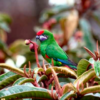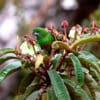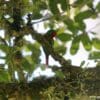Whiskered Lorikeet
Also known as:
Plum-faced Lorikeet, Plum-faced Mountain Lory
Also known as:
Plum-faced Lorikeet, Plum-faced Mountain Lory

Oreopsittacus

arfaki
Size:
15 cm (6 in)
Weight:
16-23 g (0.5-0.8 oz)
Subspecies including nominate:
three: O.a. arfaki, O.a. major, O.a. grandis
Colour Adult:
O.a. arfaki: Both adults mainly green in colour; red forecrown; purple lores and cheeks; from lores to area below eyes are two rows of white streaks; orange/red abdomen and lower flanks; yellow on sides of undertail coverts; red underwing coverts to sides of breast; underwing stripe yellow; green tail tipped with rose/red. Beak black. Eye dark brown.
O.a. major: Larger than arfaki; tail has scarlet tips.
O.a. grandis: As in major, but with green on abdomen to lower flanks.
Colour Juvenile:
O.a arfaki: Frontal band red in males, orange frontal band narrower in females; green crown; dull green cheeks, with dull mauve wash; white steaks beneath eye faint.
O.a. major: As in adults.
O.a. grandis: As in adults.
Call:
Calls are described as soft, twittering notes sounding like the jangle of small coins; also repetitious, abrupt notes.
More Information:
Content Sources:
CITES
BirdLife International
Cornell Lab of Ornithology/Birds of the World
Parrots: A Guide to Parrots of the World, Juniper and Parr, 1998
Parrots of the World, Forshaw, 2006. 2010 edition
Lexicon of Parrots, Thomas Arndt.
Captive Status:
Rare
Longevity:
—
Housing:
Enclosure 2 x 1 x 2 m (6.5 x 3 x 6.5 ft), minimum temperature 20 C (68 F), with roosting box.
Diet:
Fruits such as: apple, pear, orange, banana, cactus fruits, mango, papaya, pomegranate; nectar made from: honey, pollen, brewer’s yeast, oat flakes, multigrain flakes; mineral and vitamin supplements; green leaves such as: Swiss chard, lettuce, kale, sowthistle, dandelion, chickweed; additional commercial lory food during acclimatisation.
Enrichment:
—
Nest Box Size:
Vertical box 15 cm x 15 cm x 40 cm (6 x 6 x 15 in).
Clutch Size:
Not recorded.
Fledging Age:
—
Hatch Weight:
—
Peak Weight:
—
Weaning Weight:
—
World Population:
Unknown but recorded as fairly common. Decreasing.
IUCN Red List Status:
Least Concern
CITES Listing:
Appendix II
Threat Summary:
Not globally threatened. Fairly common but difficult to observe. This species is considered to have a medium dependency on forest habitat, and tree cover is estimated to have declined by 1% within its mapped range over the past 10 years. Therefore, it is tentatively suspected that this may have led to a 1-19% decline in the species’ population over the same period.
Range:
O.a. arfaki: Mountains of Vogelkop, West Papua.
O.a. major: Snow Mountains, West Papua.
O.a. grandis: Mountains of SE New Guinea, west to Huon Peninsula and Victor Emanuel Range, W Papua New Guinea.
Habitat:
Found from 2000-3750 m (6560-12,300 ft) in montane moss forest.
Wild Diet:
Diet includes nectar, possibly pollen of Dimorphanthera cf. cornuta, flowers and fruits of Schefflera and berries.
Ecology and Behaviour:
Most often seen in pairs or small flocks which are quite conspicuous. Forages in the canopy and mid-storey on flowers of epiphytes and often in the company of other blossom-feeders.
Clutch and Egg Size:
Not recorded.
Breeding Season:
June-October.
Related Links:
—
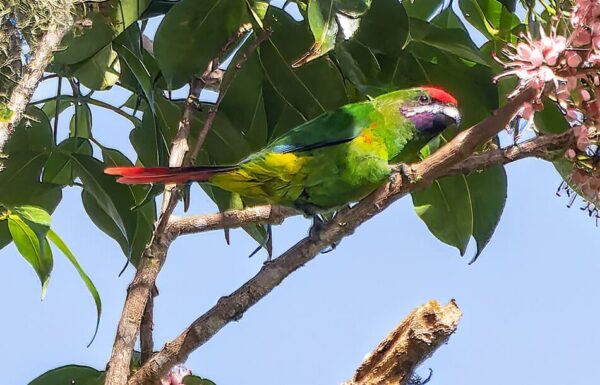
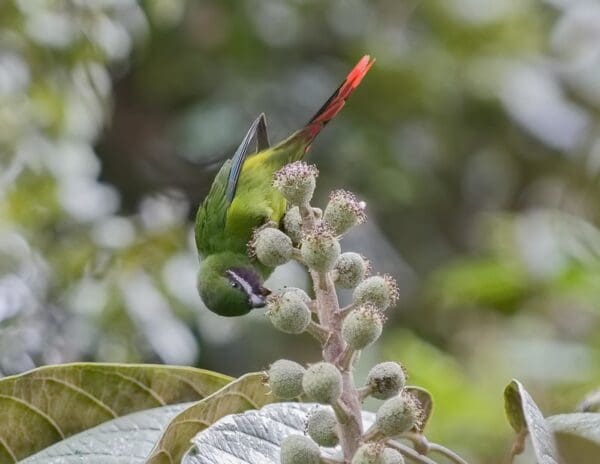
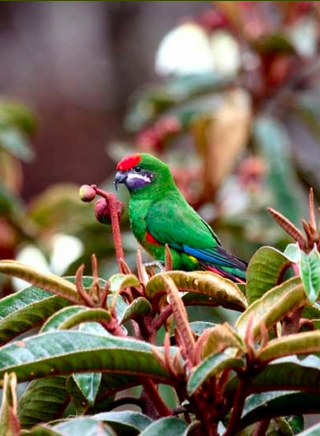
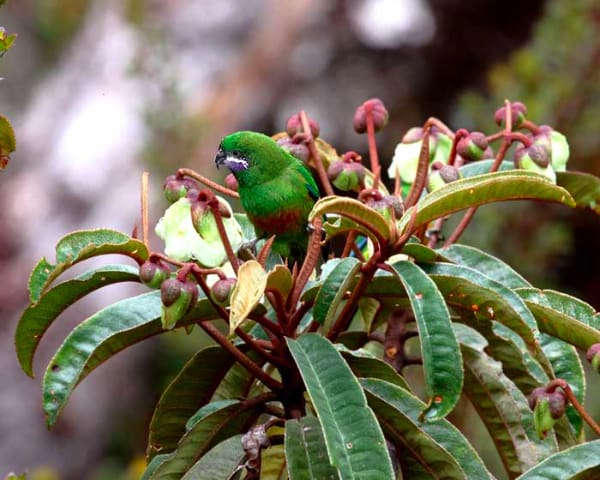
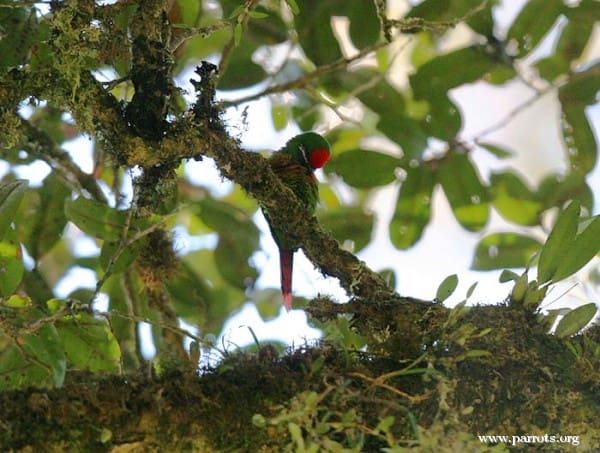
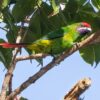
![© Patty McGann [CC BY-NC 2.0] via Flickr](https://parrots.org/wp-content/uploads/2023/01/wpt_Whiskered-Lorikeet_1258-5-100x100.jpg)
